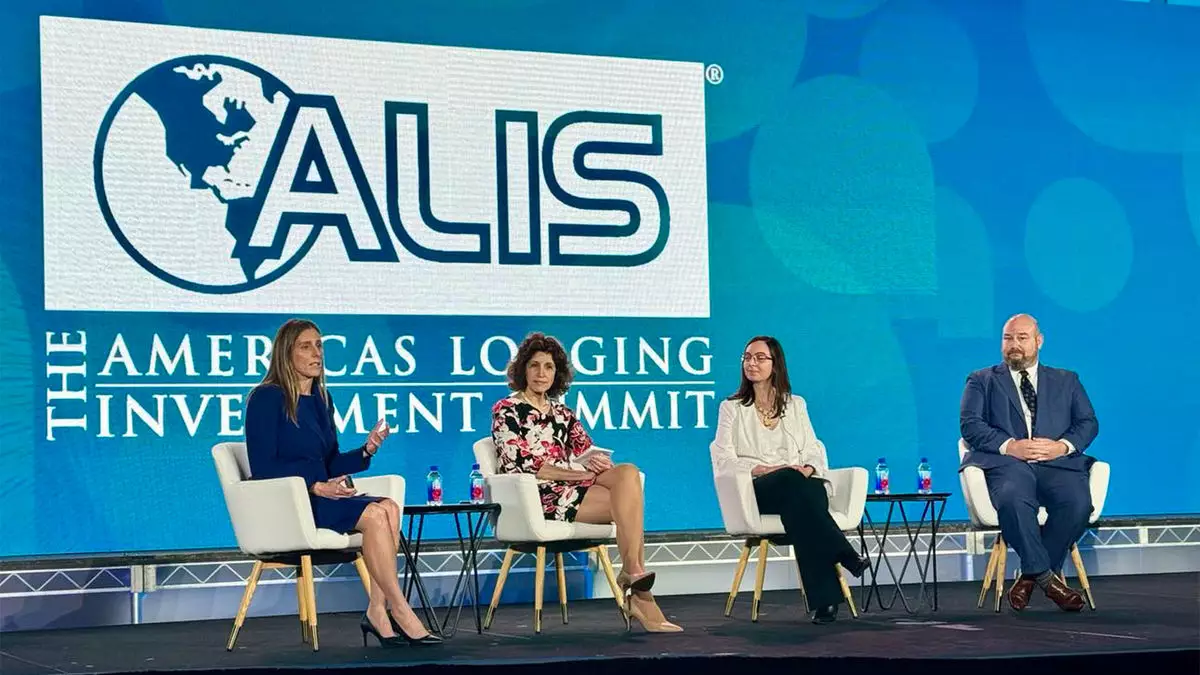The U.S. hotel industry is currently experiencing encouraging prospects, according to industry insiders at this year’s Americas Lodging Investment Summit (ALIS). However, there are concerns about potential headwinds on the horizon and some tailwinds losing steam. In a panel discussion focused on future performance expectations, several experts shared their insights on the major factors impacting the industry.
Laura Resco, the director of hotel intelligence for the Americas at HotStats, highlighted two major “wild cards” that could significantly impact performance in 2024. The first is geopolitical instability, which can create uncertainty in the general business environment. The second is the upcoming presidential election, which can also contribute to increased uncertainty and affect consumer confidence. These factors make it hard to predict the future performance of the hotel industry accurately.
Ryan Meliker, the president of Lodging Analytics Research & Consulting, expressed a relatively positive outlook. He noted healthy levels of group demand and some improvement in foreign inbound leisure travel. However, international visitor arrivals in 2023 were still down 16% compared to 2019. This lagging recovery in corporate travel could negatively impact the industry, and there is also the possibility that domestic leisure demand could decline as U.S. travelers increasingly prefer international trips.
Meliker also raised concerns about a potential weakening U.S. consumer. When there is caution surrounding the economic outlook, consumers tend to save more and spend less. This behavior can have a significant impact on the hotel industry, as decreased consumer spending directly affects hotel bookings and revenue.
Amanda Hite, the president of STR, took a more optimistic stance, citing record-high levels of revenue per available room (RevPAR) and average daily rate (ADR). She also highlighted the better-than-expected economic landscape in the previous year. Hite believes that despite the likelihood of an economic slowdown in the U.S. this year and moderating rate growth, the U.S. traveler will remain resilient. She based this prediction on the growing employment level of college-educated professionals and the prioritization of travel spend among households earning $100,000 or more.
Hite presented STR’s latest U.S. hotel industry forecast, which remains largely unchanged from the previous forecast. The projections for 2024 indicate relatively flat occupancy at 63.6%, a 3.1% growth in ADR, and a 4.1% increase in RevPAR. While these numbers suggest modest growth, they are subject to the uncertainties outlined earlier.
Cindy Estis Green, the CEO of Kalibri Labs, echoed STR’s forecast but emphasized the continued impact of stunted recovery in corporate travel on the overall industry performance. Estis Green noted that the strength of rates primarily stems from leisure demand, which is a positive aspect. However, the sustainability of this demand remains unknown.
The U.S. hotel industry’s future appears to be a mix of promise and uncertainty. While some indicators, such as record-high levels in RevPAR and ADR, point towards growth and resilience, there are significant concerns. Geopolitical instability and the upcoming presidential election, the lagging recovery in corporate travel, and the potential weakening of the U.S. consumer pose challenges to the industry’s success. As the industry navigates these uncertainties, it is crucial for hoteliers to remain agile and proactive in adapting their strategies to changing market conditions. Only through careful analysis and flexibility can the industry overcome the challenges it faces and capitalize on the opportunities that lie ahead.


Leave a Reply